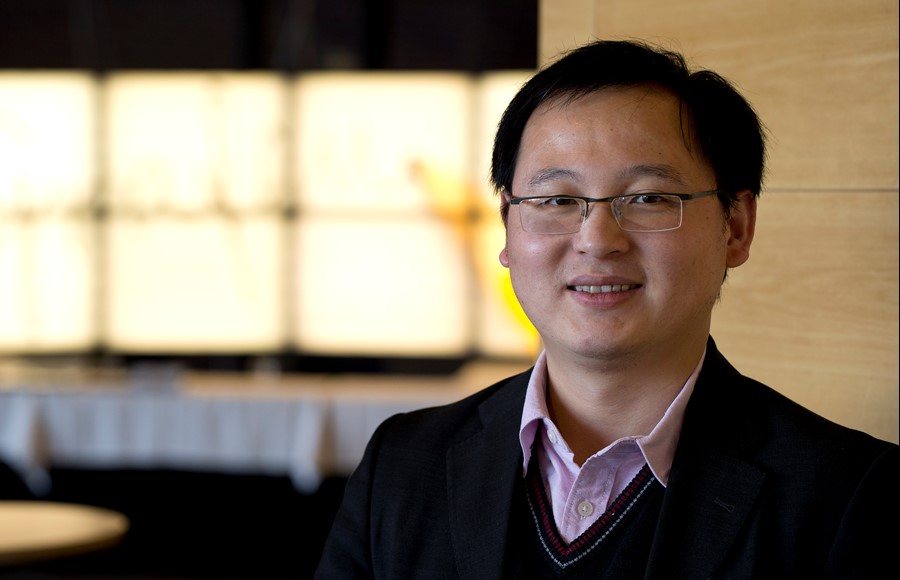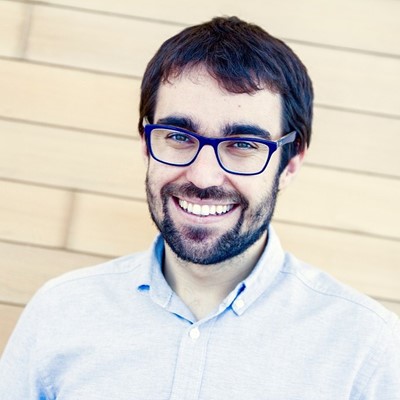Xinliang Feng on the future of graphene
Graphene Flagship scientist Xinliang Feng shares his views on the future of graphene and our project with us.
Today, we interview Xinliang Feng, the Graphene Flagship Leader for Functional Foams and Coatings. Feng joined our project at the very beginning of our ramp-up phase, when researchers throughout Europe were sharing ideas and shaping the structure of one of the most ambitious endeavours funded by the European Union. Very recently, Feng was appointed Max Planck Director at the Institute of Microstructure Physics in Halle, Germany.
First off, congratulations on your appointment to the very prestigious Max Planck Director position. We were wondering what your ambitions for this new role are. Where do you see the research going in the next few years?
Here at the Max Planck Institute of Microstructure Physics we will continue to do science, of course. We will exploit our deep knowledge of fundamental synthetic chemistry to discover new applications of graphene and related materials to address big societal challenges. There are great opportunities for these materials in information technologies, energy solutions and environmental applications.
Traditionally, our institute specialises in microstructure physics and devices. Now, we hope to bring a new spirit to expand our research lines in chemistry and materials. Not only graphene – we will study a broad family of materials, to design multidisciplinary functional devices and develop novel technological applications.
This new position is a big step from where you started studying science. Why did you decide to pursue this career?
I have always had a great interest in science, which has been my major driving force to keep studying and exploring chemistry and new materials. I started my career in Wuhan, then Shanghai, in China, and after that moved to Germany to begin my doctoral studies. Throughout my career, I have worked in many different fields, from pure synthetic organic chemistry to polymer and hybrid materials… and now, of course, graphene and layered materials!
Now that you mention graphene, when did you first encounter this material, and why did it catch your attention?
Technically speaking, we started developing graphene-like structures short after its isolation in 2004. Graphene was originally isolated by exfoliation of graphite. However, our approach is bottom-up, we use synthetic chemistry to create carbon structures that are unattainable using only physical methods. Plus, chemistry allows us to functionalise these materials at will.
We synthesised a class of compounds known as polycyclic aromatics that, like graphene, are monoatomic layers of carbon – it’s just smaller pieces! We studied their properties in a wide variety of fields, such as organic electronic and spintronic devices and light-sensitive dyes for solar cells. We also developed thin structures – or graphene nanoribbons – with different shapes and lengths, which are tremendously useful for transistors.
What is your favourite property of graphene?
I’m really fond of its wonderful electronic and optoelectronic properties. Graphene exhibits very high charge mobility and conductivity. However, it has no bandgap, which is a drawback when it comes to designing switching devices. That is where chemistry comes into play! We use it to develop graphene nanoribbons very precisely, where we tailor the material’s properties on-demand. We are also tremendously interested in other two-dimensional and layered materials, especially synthetic 2D polymers, organic polymers, metal organic frameworks… and much more. They allow us to create structures and products that are chemically very diverse. Moreover, many of their properties remain unexplored – and this is truly exciting!
What application of graphene will become absolutely essential in future technologies?
Personally, I see a lot of opportunities in the field of energy technologies: new batteries, and devices for energy storage like supercapacitors. In these applications, even just a small amount of graphene enhances the most attractive properties – it works better than other carbon-based materials.
We also keep working on graphene nanoribbons – imagine cutting graphene sheets into thin strands – which provide great potential in digital application and electronics. They are becoming increasingly popular, I must say.
And of course, there are heterostructures! They combine layers of different layered materials like ingredients in a sandwich – and there are so many options to choose from nowadays. The different combination of all sorts of materials (organic, inorganic, synthetic) implies many remain to be discovered. Heterostructures will find interesting applications in membranes, topological materials, electronics and much more. However, we need further research to jump the gap to applications, in this field.
When did you first learn about the Graphene Flagship? Would you agree that the project has accelerated your career?
Oh, yes indeed! I was lucky to be involved in the Graphene Flagship from the very beginning, before 2010. Back then I was a group leader in Mainz, and I started collaborating with other European colleagues to define the key topics and directions for this one-of-a-kind initiative.
My personal career grew alongside the Graphene Flagship. During these past years, I have learnt a lot with my colleagues and friends in the project, understanding more about graphene and layered materials, from physics and fundamentals to the applications and innovation. Besides, I have met many new good friends!
Now, the Graphene Flagship supports industry-led spearhead projects to boost TRL and foster market penetration. What is your involvement in these?
We’re really working hard to foster innovation. Between 2018 and 2020 our group was involved in one of the first Graphene Flagship Spearhead Projects – Weargraph. There, we developed graphene-enabled energy storage solutions for wearable electronics.
Now we work within the new Graphene Flagship Spearhead Project called Aerograft, which is led by Lufthansa Technik. Our mission is to develop prototype self-cleaning air filters that use aero-graphene foam. We produce functionalised graphene materials, in collaboration with the teams at Graphene Flagship partner the University of Kiel, Germany and Sixonia Tech. These have a very high surface area while remaining strong – making them ideal for filtering and cleaning solutions.
I think it is really meaningful to push the TRL for these technologies – the Graphene Flagship follows the right strategy pushing for real-life applications.
How do you expect graphene will change the technological landscape? What applications of graphene do you see reaching the market first?
Graphene truly has a lot of potential applications, such as inks, polymer composites, batteries, energy storage – some of these are already finding attractive uses and hitting the market. Many other disruptive technologies will soon or later emerge, for instance multifunctional sensors, a field in which graphene and related materials have a great deal of potential too, especially in combination with nanoribbons and heterostructures!
What advice would you give to one of our Graphene Flagship early-career scientists?
I think the path I followed in the Graphene Flagship is the perfect analogy. It is great to start your career being curious about something new – a new material, a new reaction, a new phenomenon. Then, you need to be persistent and fight for your ideas and dreams. When the Graphene Flagship kicked off, we had to work really hard to keep the project going, and eventually achieve our goal – tacking graphene into commercial applications. This spirit was inspirational for us and should be for any early career scientist.

Xinliang Feng, Graphene Flagship Leader for Functional Foams and Coatings




